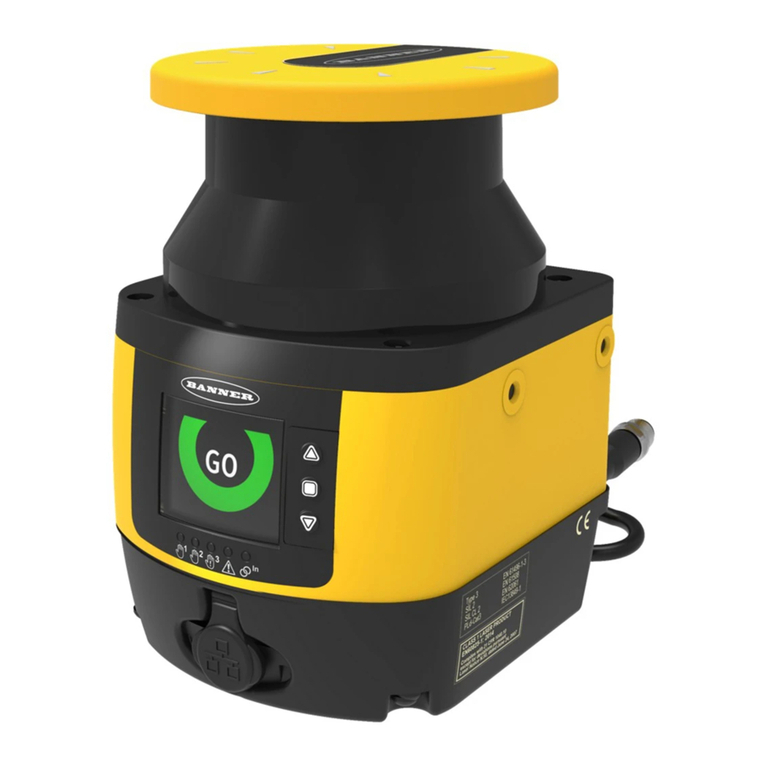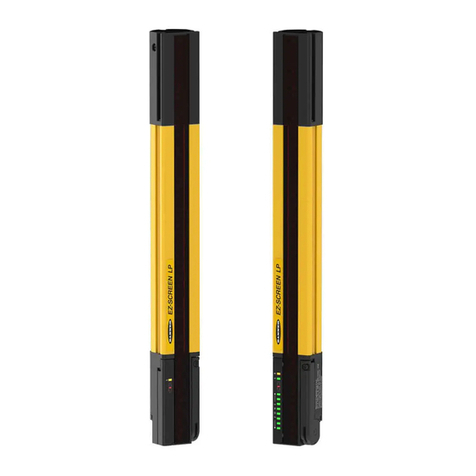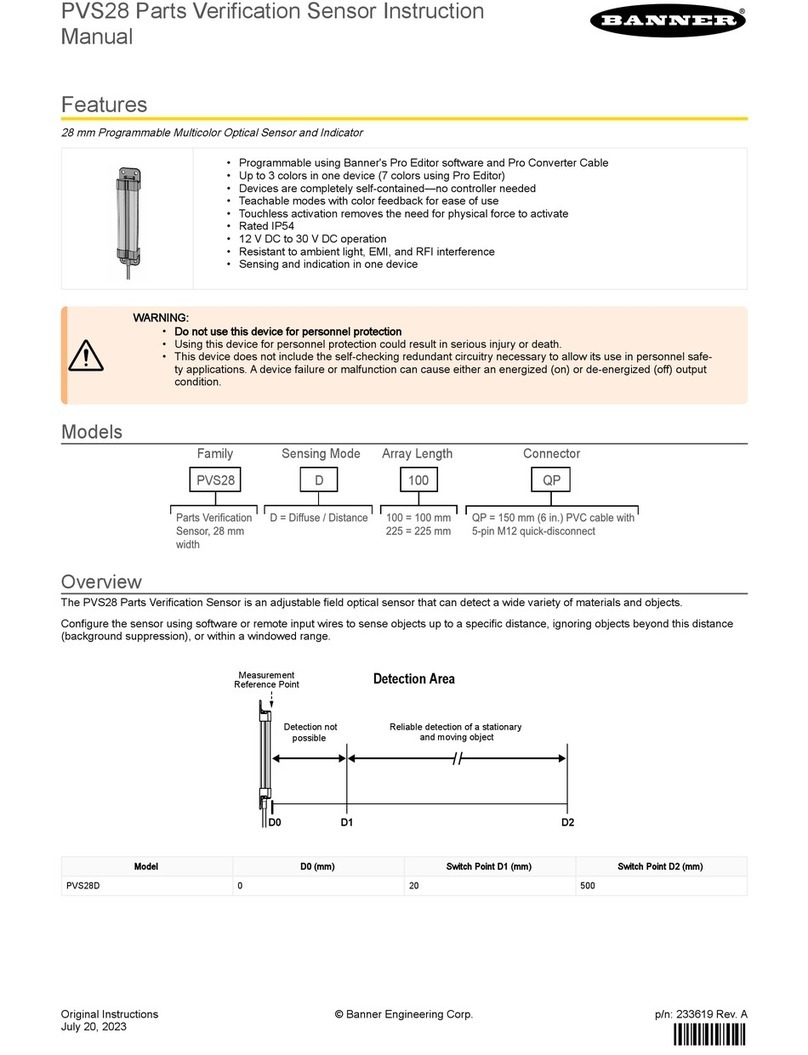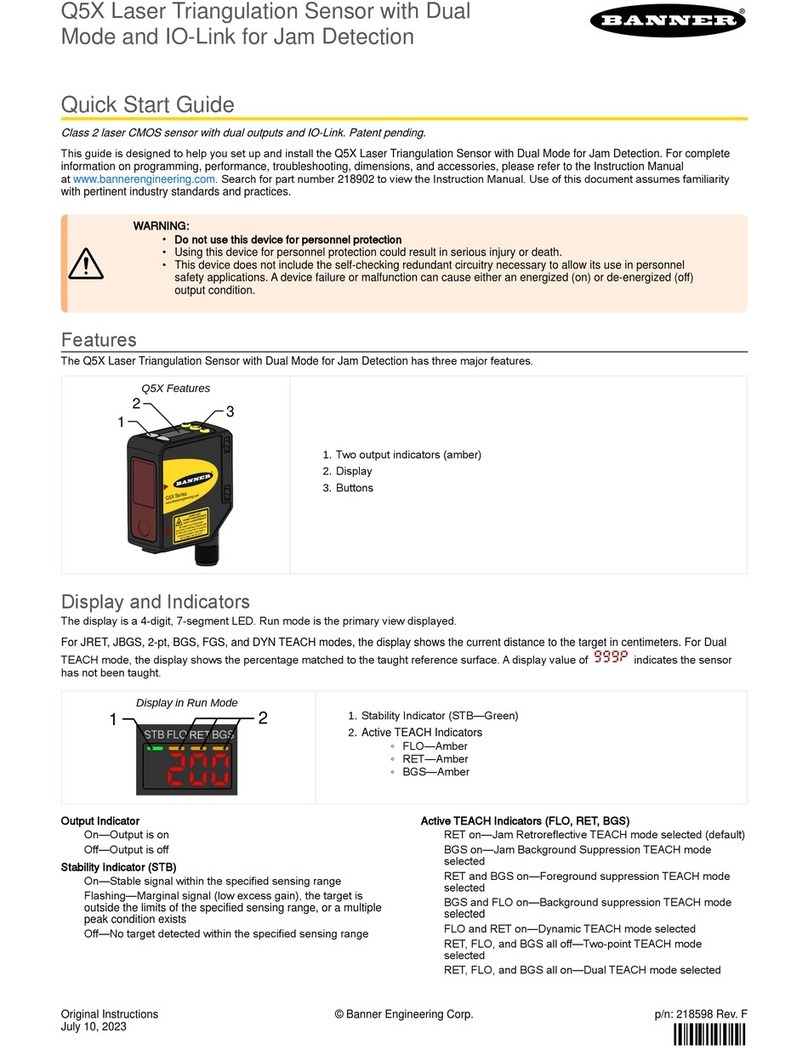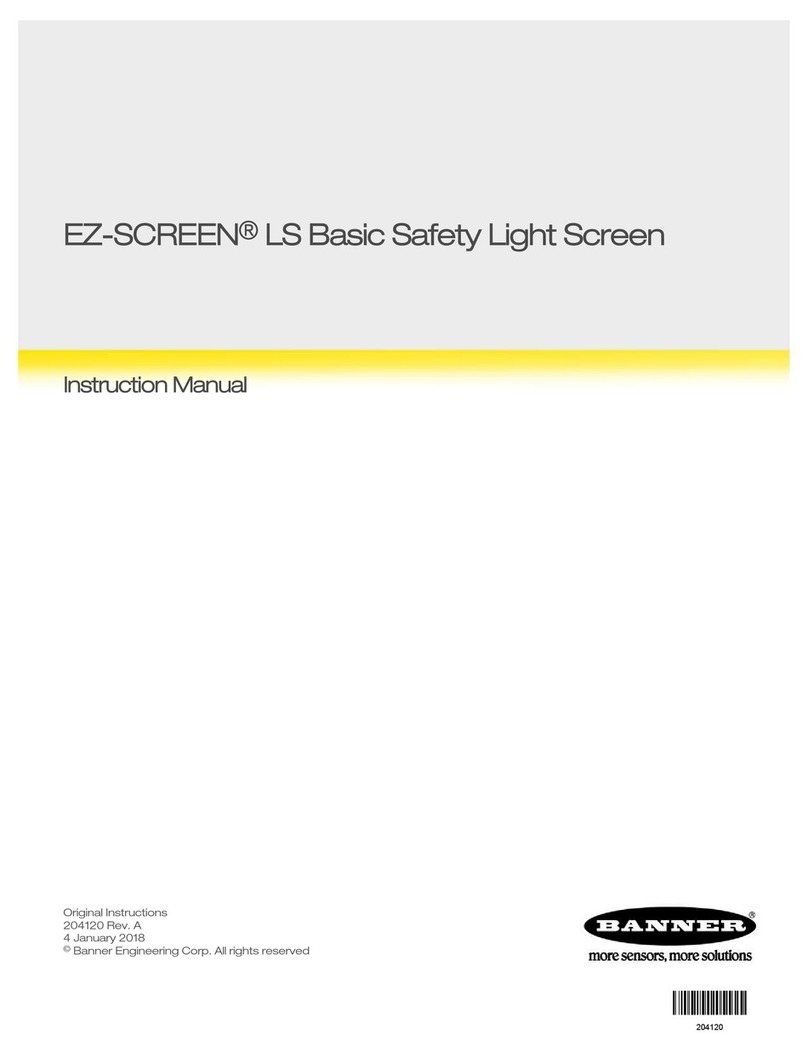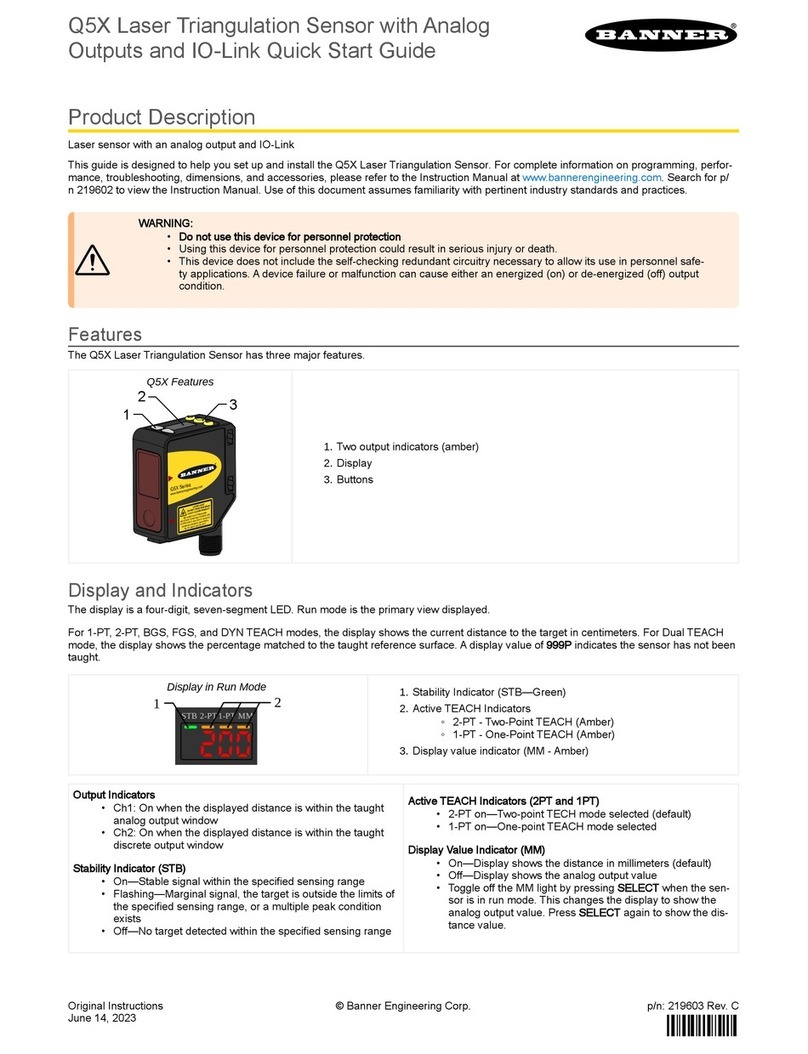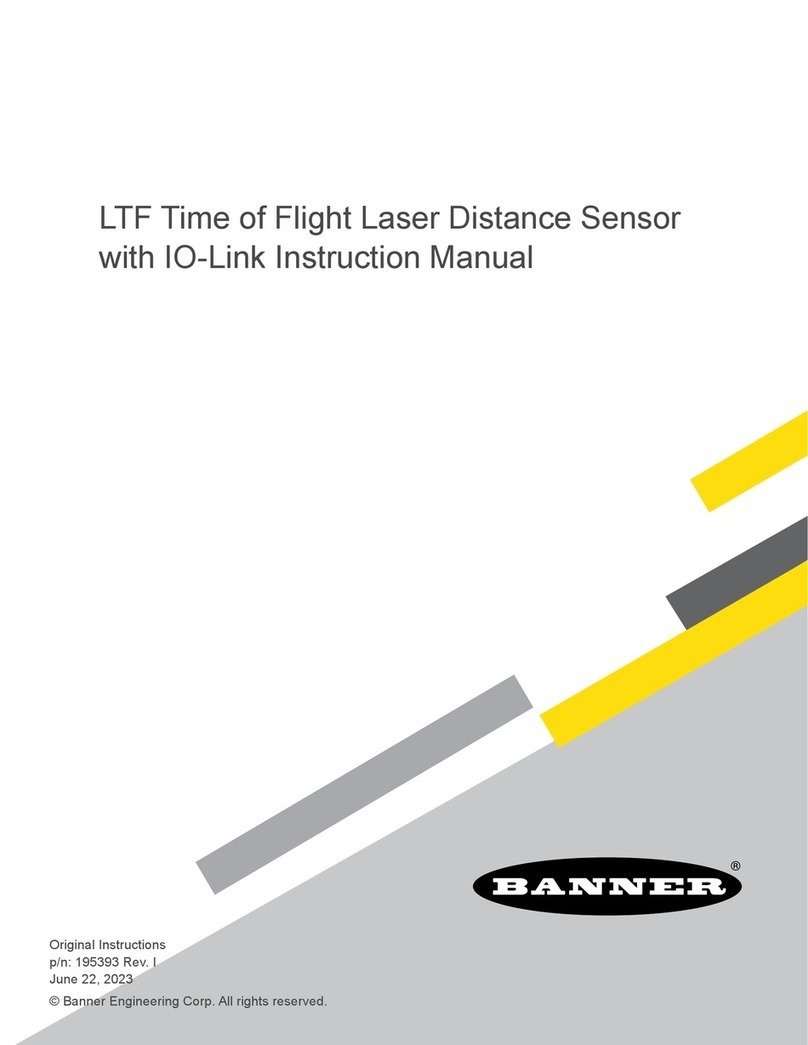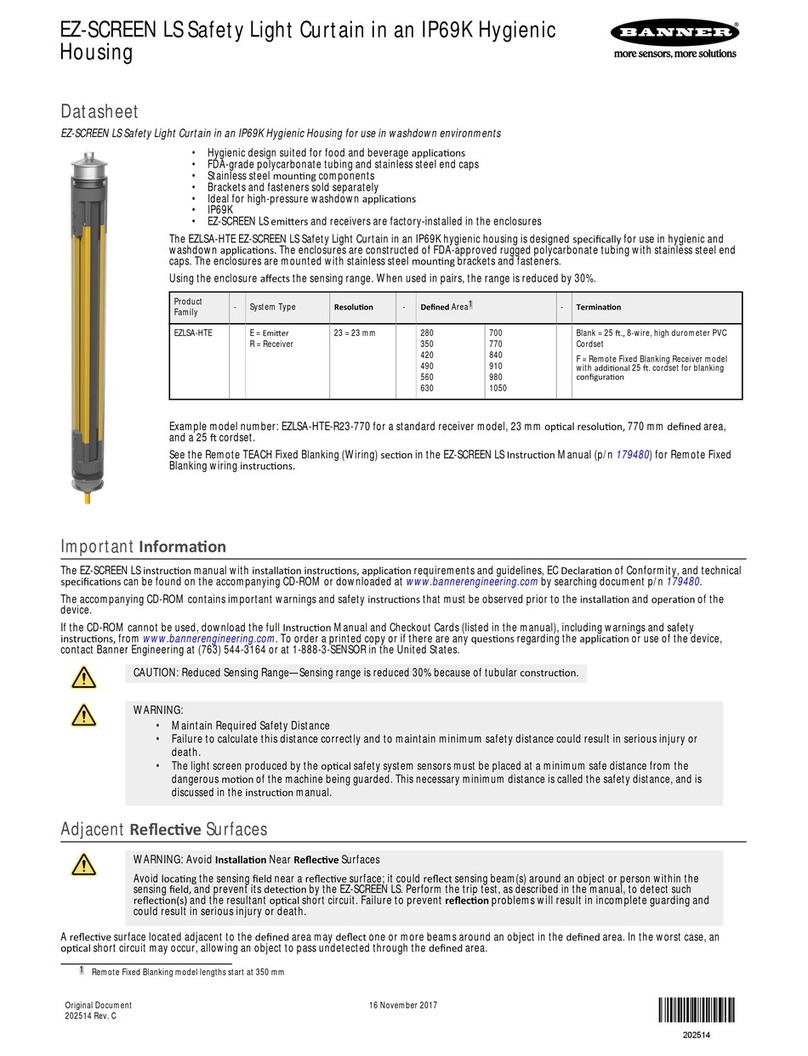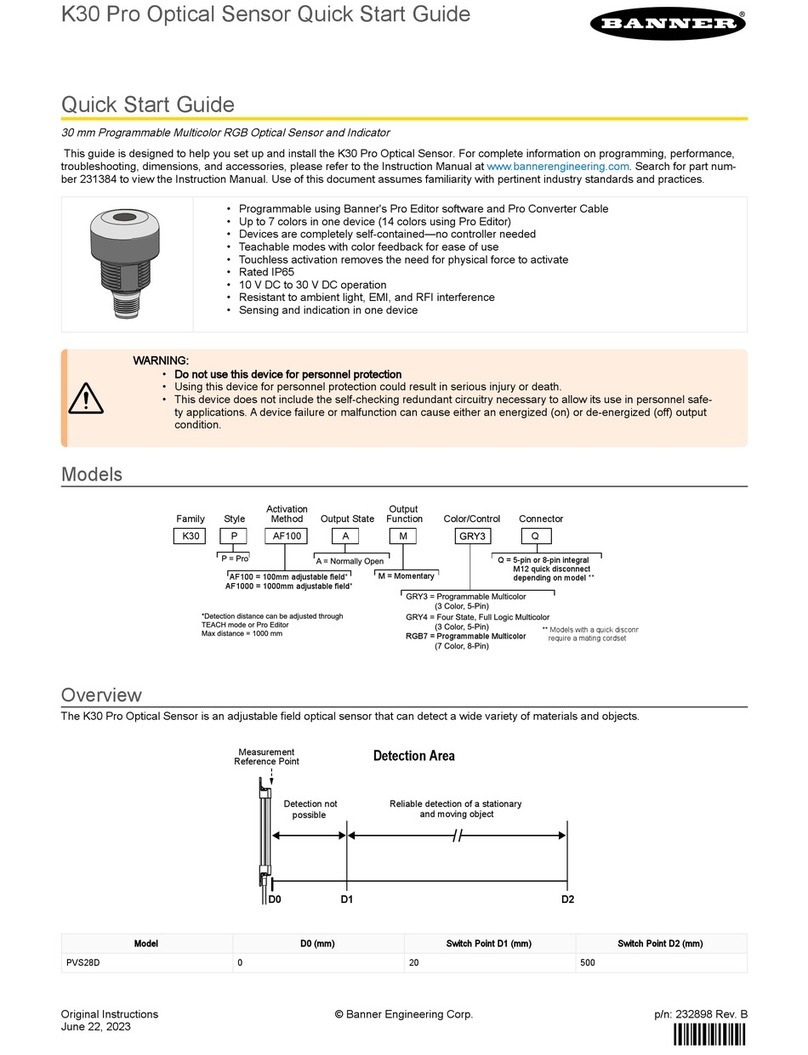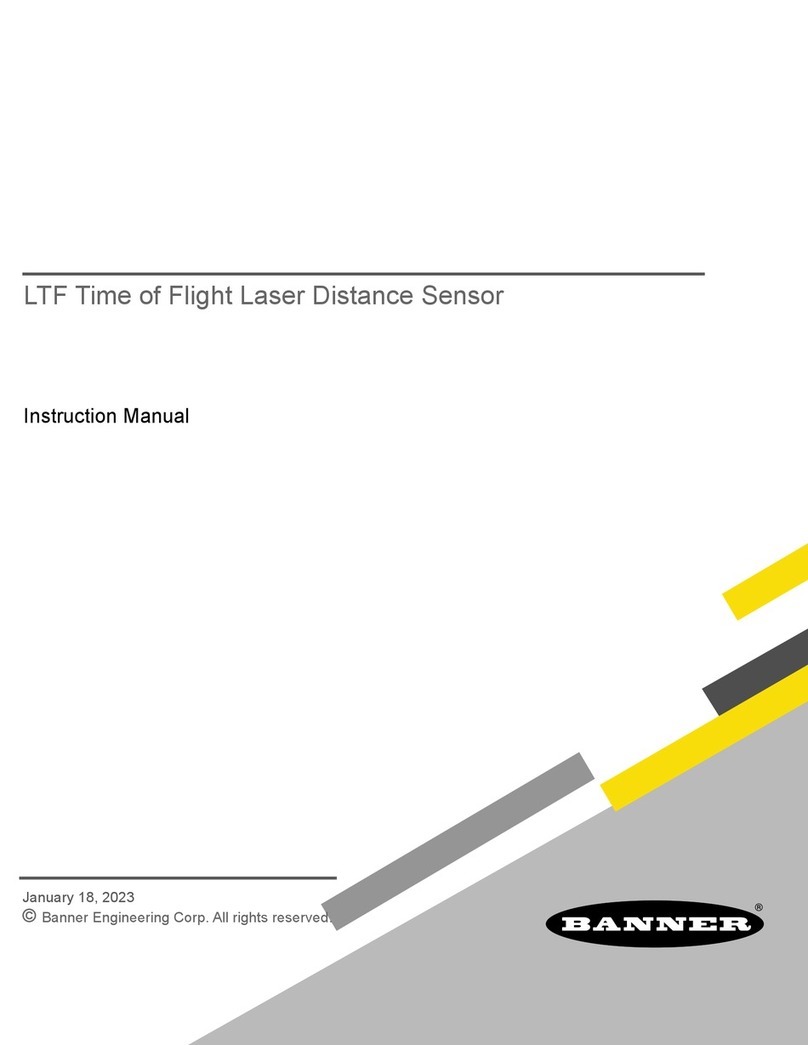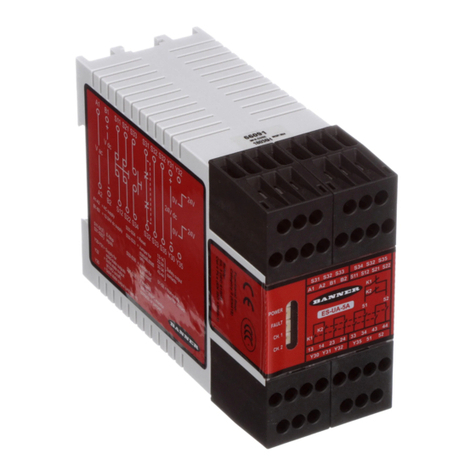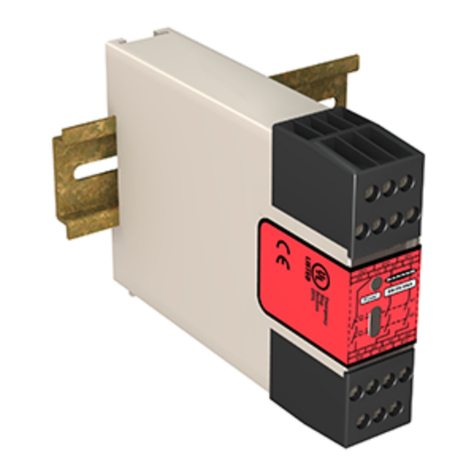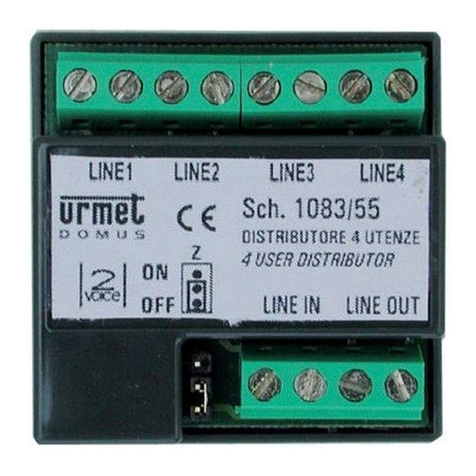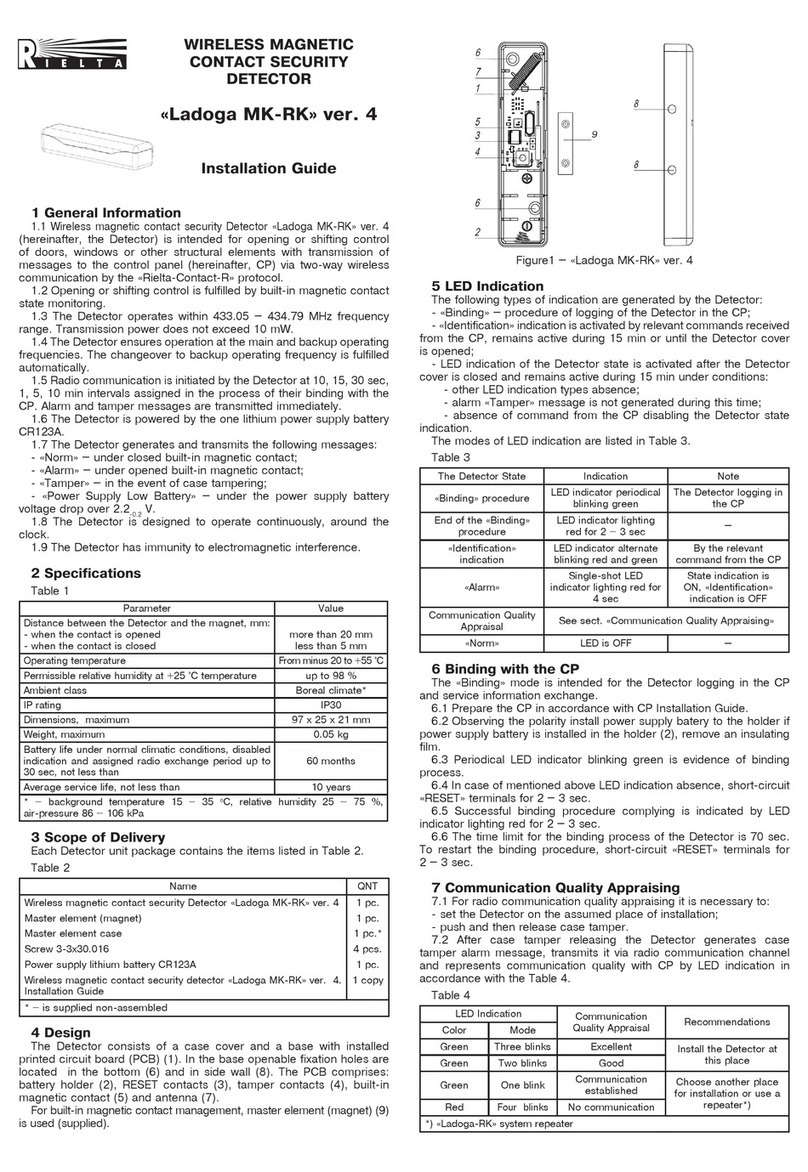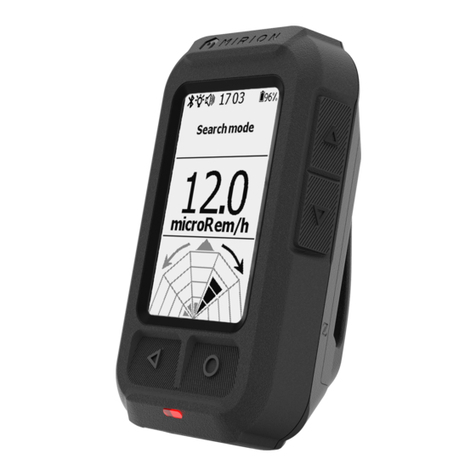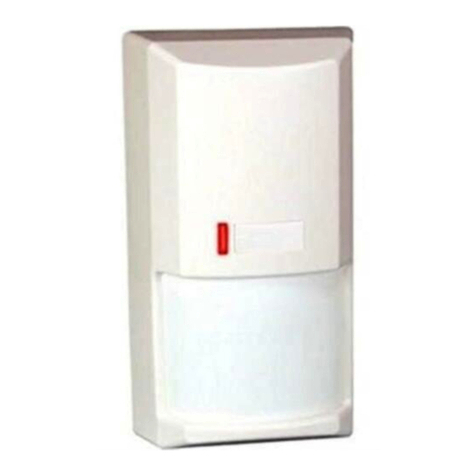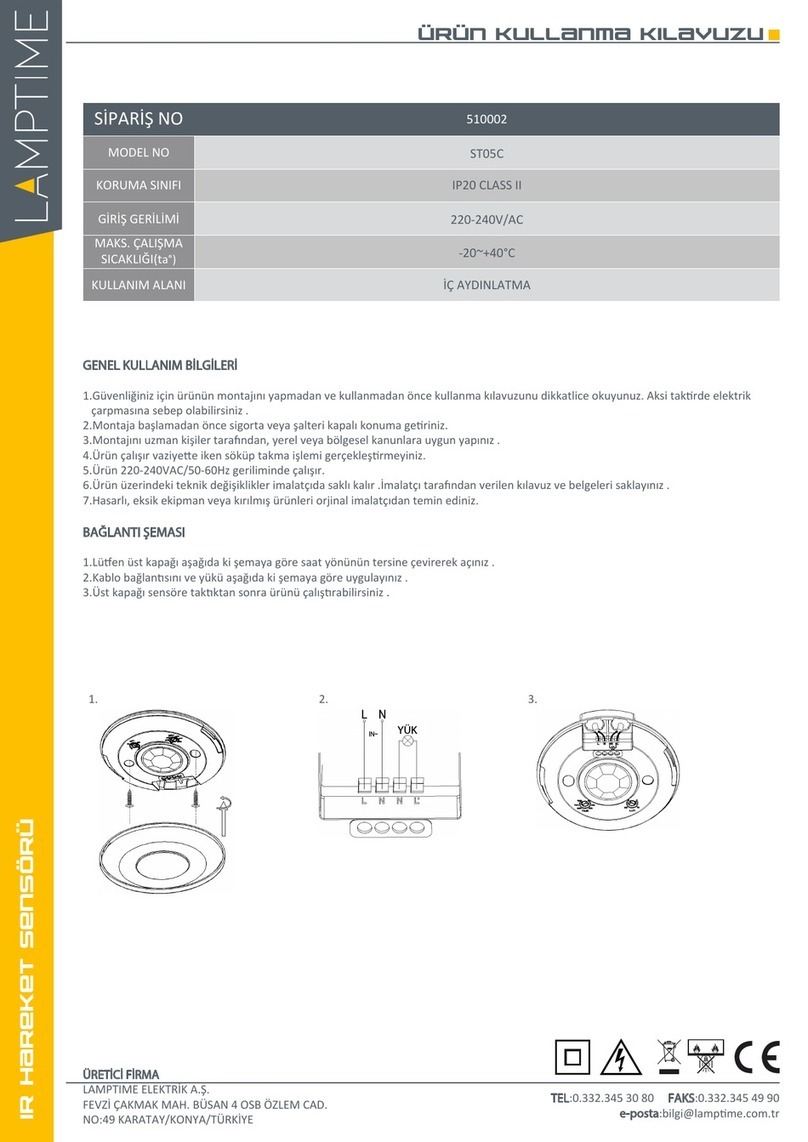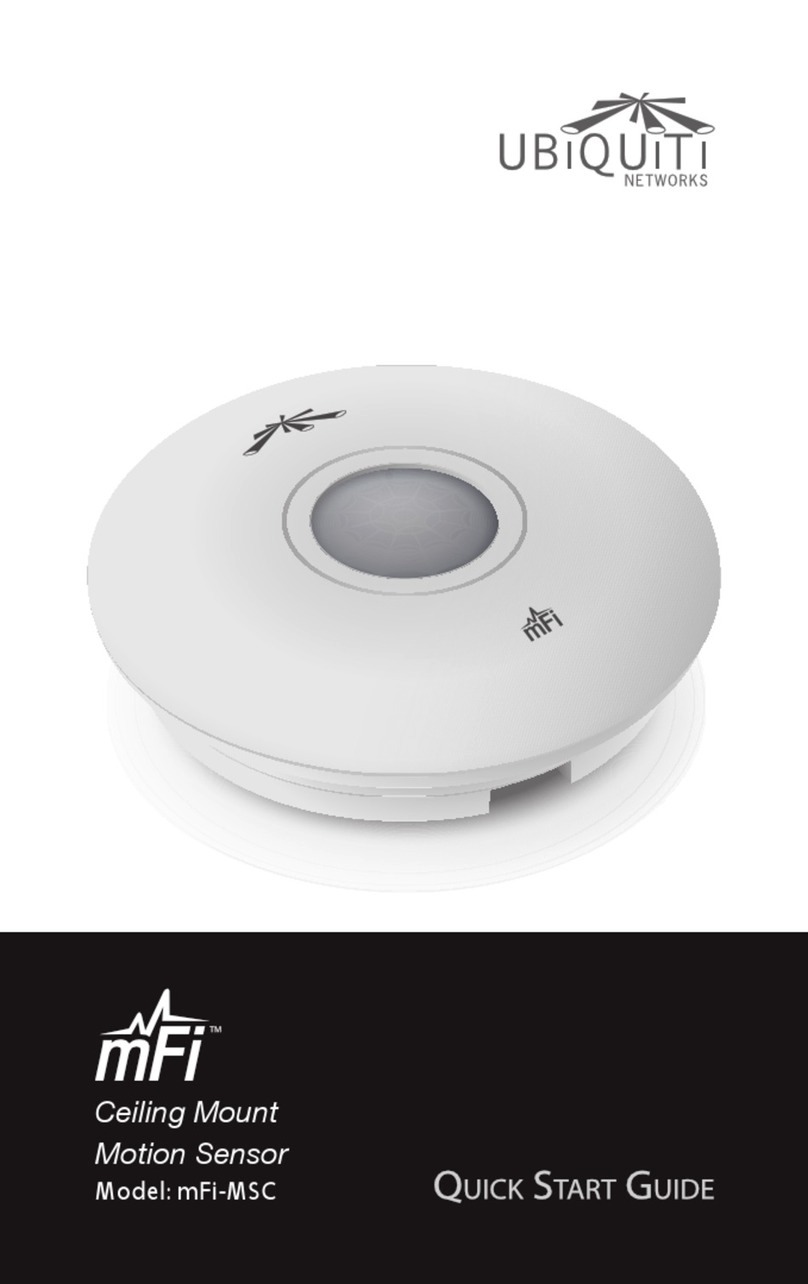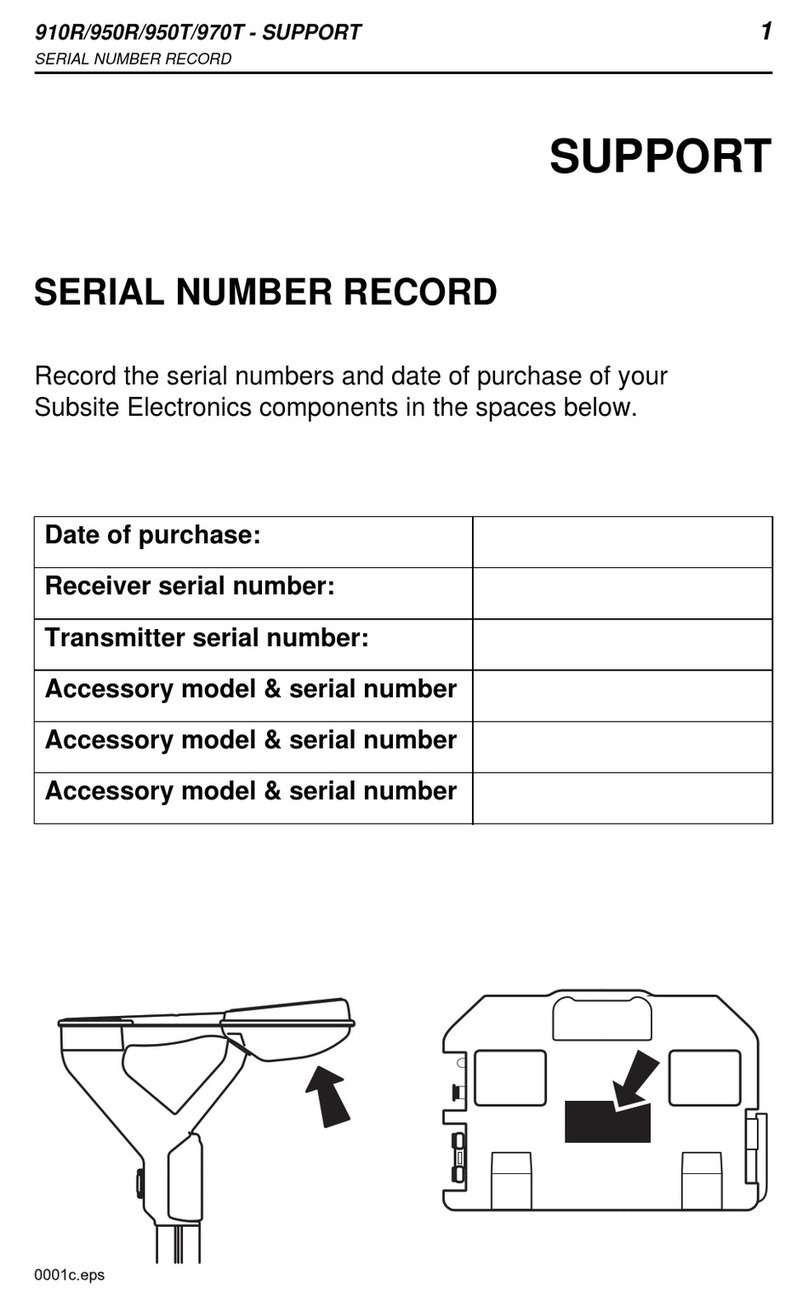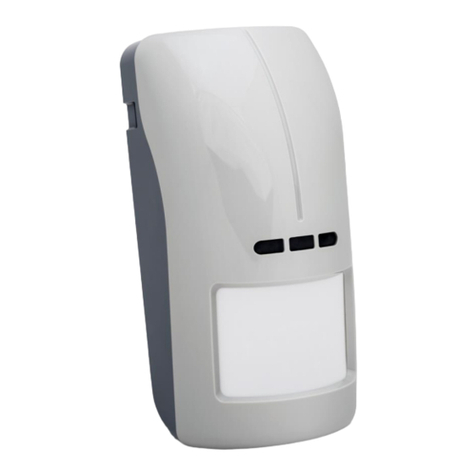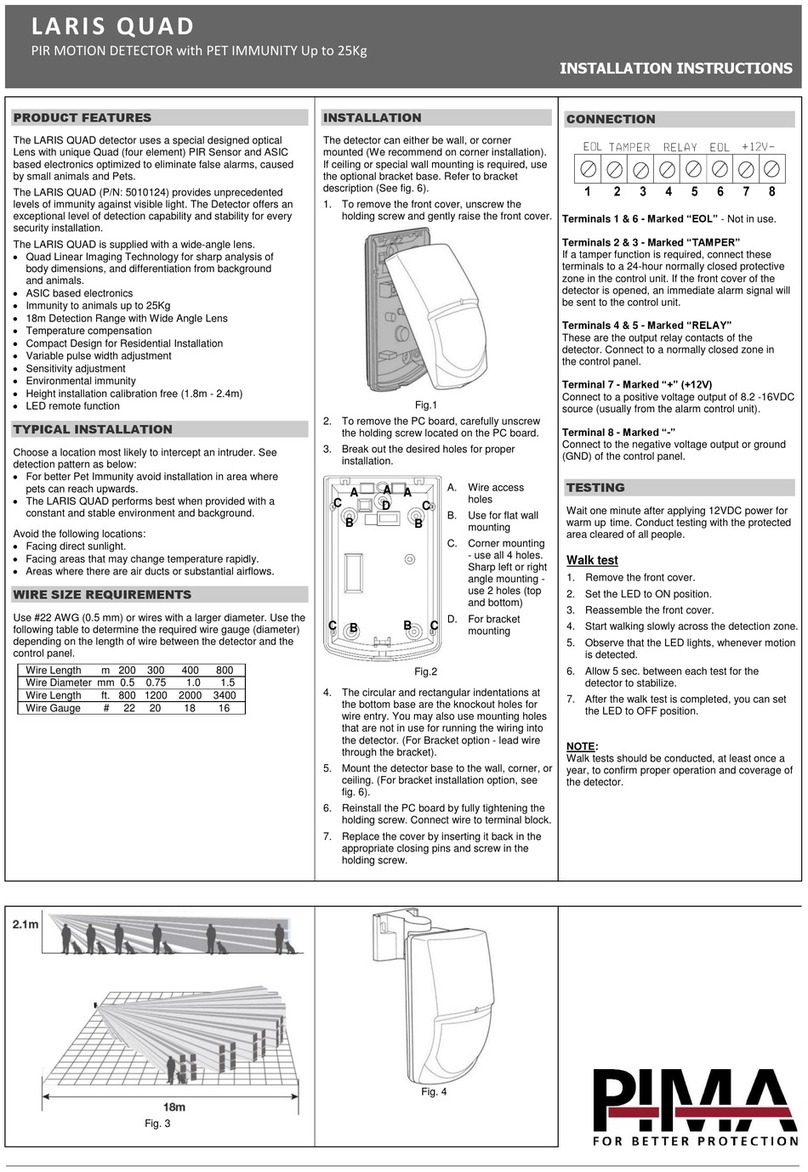
© Banner Engineering Corp. www.bannerengineering.com 7
BANNER ENGINEERING CORP Q5X LASER TRIANGULATION SENSOR WITH ANALOG OUTPUTS AND IO-LINK QUICK START GUIDE
Basic TEACH Instructions
Use the following instructions to teach the Q5X sensor. The instructions provided on the sensor display vary depending on the type of TEACH mode selected.
Two-point TEACH is the default TEACH mode.
1. Press and hold TEACH for longer than 2 seconds to start the selected TEACH mode.
2. Present the target.
3. Press TEACH to teach the target. The target is taught and the sensor waits for the second target, if required by the selected TEACH mode, or returns to
Run mode.
4. Complete these steps only if it is required for the selected TEACH mode.
a. Present the second target.
b. Press TEACH to teach the target. The target is taught and the sensor returns to Run mode.
AFTER COMPLETING THIS TASK:
See the Instruction Manual for detailed instructions and other available TEACH modes. The TEACH modes include:
• Two-point analog teach 2-Pt —Sets the distance values associated with 0V and 10V (4mA and 20mA) based on taught target distances
• One point analog teach 1-Pt —Sets the 5V (12mA) midpoint of the analog output to center the analog output around a reference target position
• Two-point static background suppression 2-Pt (discrete, channel 2 only)—Two-point TEACH sets a single switch point. The sensor sets the switch point
between two taught target distances.
• Dynamic background suppression dYn (discrete, channel 2 only)—Dynamic TEACH sets a single switch point during machine run conditions. The sensor
takes multiple samples and the switch point is set between the minimum and the maximum sampled distances.
• One-point window (foreground suppression) FGS (discrete, channel 2 only)—One-point window sets a window (two switch points) centered around the
taught target distance.
• One-point background suppression bGS (discrete, channel 2 only)—One-point background suppression sets a single switch point in front of the taught
target distance. Objects beyond the taught switch point are ignored.
• Dual intensity + distance duAL (discrete, channel 2 only)—Dual mode records the distance and amount of light received from the reference surface. See
Dual Mode Reference Surface Considerations on page 11 for more information about selecting a reference surface. The output switches when an object
passing between the sensor and the reference surface changes the perceived distance or amount of returned light.
Manual Adjustments
Manually adjust the sensor switch point using the + and - buttons.
1. From Run mode, press either + or - one time.
STEP RESULT:The selected channel displays briefly, then the current switch point value flashes slowly.
2. Press + to move the switch point up or - to move the switch point down.
STEP RESULT:After 1 second of inactivity, the new switch point value flashes rapidly, the new setting is accepted, and the sensor returns to Run mode.
AFTER COMPLETING THIS TASK:
NOTE: When FGS mode is selected, manual adjustment moves both sides of the symmetrical threshold window simultaneously, expanding and collapsing the window
size. Manual adjustment does not move the center point of the window.
NOTE: When dual mode is selected, after the TEACH process is completed, use the manual adjustment to adjust the sensitivity of the thresholds around the taught
reference point. The taught reference point is a combination of the measured distance and returned signal intensity from the reference target. Manual adjustment
does not move the taught reference point, but pressing + increases the sensitivity, and pressing - decreases the sensitivity. When re-positioning the sensor or
changing the reference target, re-teach the sensor.
Locking and Unlocking the Sensor Buttons
Use the lock and unlock feature to prevent unauthorized or accidental programming changes.
Three settings are available:
•uLoc—The sensor is unlocked and all settings can be modified (default).
•Loc—The sensor is locked and no changes can be made.
•0Loc—The switch point value can be changed by teaching or manual adjustment, but no sensor settings can be changed through the menu.
When the sensor is in either Loc or 0Loc mode, the active channel can be changed using (+) (CH1/CH2).
When in Loc mode, Loc displays when the (SELECT)(TEACH) button is pressed. The switch point displays when (+) (CH1/CH2) or (-)(MODE) are pressed, but Loc
displays if the buttons are pressed and held.
When in 0Loc mode, Loc displays when (-)(MODE) is pressed and held. To access the manual adjust options, briefly press and release (+) (CH1/CH2) or (-)(MODE).
To enter TEACH mode, press the (SELECT)(TEACH) button and hold for longer than 2 seconds.
To enter Loc mode, hold + and press - four times. To enter 0Loc mode, hold + and press - seven times. Holding + and pressing - four times unlocks the sensor from
either lock mode and the sensor displays uLoc.
Averaging
Use the Averaging AUG menu to set the number of measurements that are averaged together for the analog output.
Increasing the averaging improves repeatability, but increases the total response speed. The default is 16. The filter can be set to 1, 2, 4, 8, 16, 32, 64, 128, 256, or
512. Use the table to determine the total response speed.
